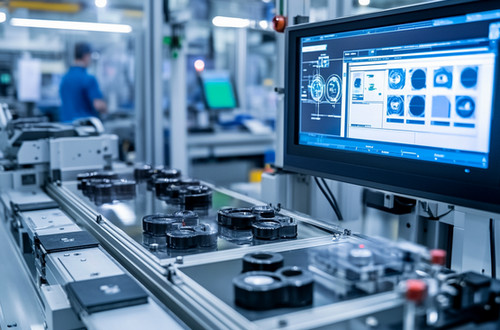News
News

Abstract
An automated assembly machine is a device that uses automation technology to assemble components. This equipment achieves efficient, precise, and repetitive assembly operations through programming and sensor technology, and it is widely used in industries such as electronics, automotive, and medical devices. This article will provide a detailed introduction to the working principles, main components, application fields, and advantages of automated assembly machines.

Main Text
1. Definition of Automated Assembly Machines
An automated assembly machine is a machine that assembles various components in a predetermined order and position through mechanical devices and control systems. This equipment typically consists of mechanical structures, control systems, sensors, and actuators, capable of completing complex assembly tasks automatically without human intervention.
2. Working Principle of Automated Assembly Machines
The core of an automated assembly machine is its control system. Through pre-written programs, the control system can direct the mechanical structures and actuators to operate according to set steps and parameters. Sensors are responsible for real-time monitoring of various parameters during the assembly process, such as position, pressure, and speed, and feeding data back to the control system to ensure the accuracy and consistency of each operation.
3. Main Components
Mechanical Structure: This is the framework of the automated assembly machine, usually including the frame, guide rails, and transmission devices, which support and move various parts.
Control System: The control system is the "brain" of the automated assembly machine, responsible for directing and coordinating the work of various parts. It usually consists of PLC (Programmable Logic Controller) or industrial computers.
Sensors: Sensors detect and feedback various state information during the assembly process, such as the presence, position, and angle of parts, ensuring the accuracy of the assembly process.
Actuators: Actuators include various motors, cylinders, and mechanical arms that perform specific assembly actions.
4. Application Fields
Automated assembly machines are widely used in various industries. Here are some main fields:
Electronics Industry: In the production of electronic products, automated assembly machines are used to assemble circuit boards, mobile phone components, and more.
Automotive Industry: Used to assemble automotive parts, such as engines and transmissions, improving production efficiency and product consistency.
Medical Device Industry: In the production of medical devices, automated assembly machines are used to assemble syringes, blood pressure monitors, and more, ensuring product hygiene and safety.
Home Appliance Industry: Used to assemble various components of household appliances, such as televisions and refrigerators, enhancing product quality and production efficiency.
5. Advantages of Automated Assembly Machines
Increased Production Efficiency: Automated assembly machines can work 24 hours a day, significantly improving production efficiency.
Enhanced Product Quality: Through precise control and repetitive operations, automated assembly machines ensure product consistency, reducing errors caused by human factors.
Reduced Production Costs: Although the initial investment is high, the long-term operating costs of automated assembly machines are lower, saving labor costs and material waste.
Enhanced Flexibility: Modern automated assembly machines are highly flexible and can quickly adapt to different product production needs by changing programs and adjusting equipment.
6. Conclusion
As an important part of modern manufacturing, automated assembly machines are increasingly being applied in various industries. Their efficient, precise, and flexible characteristics not only improve production efficiency and product quality but also reduce production costs for enterprises. With continuous technological advancements, automated assembly machines will play a more significant role in more fields, injecting new vitality into modern manufacturing.
Copyright © Shenzhen City Huya Technology Co., Ltd. All Rights Reserved Sitemap | Powered by XiaoLiang